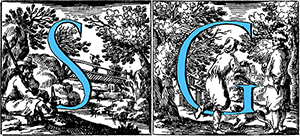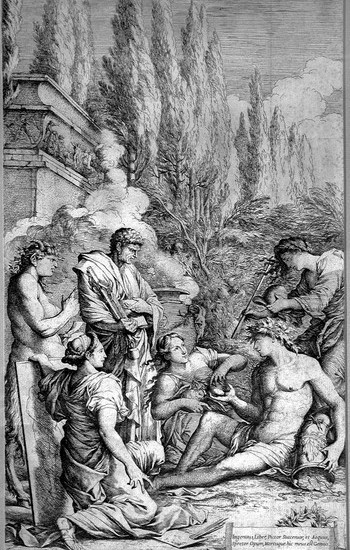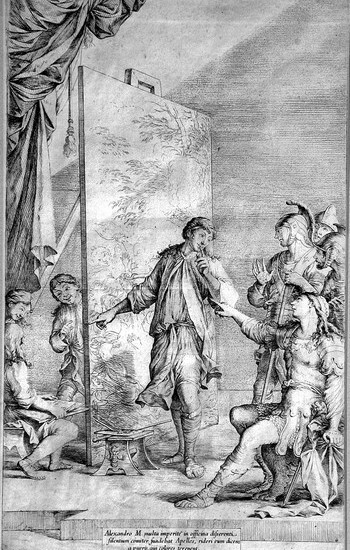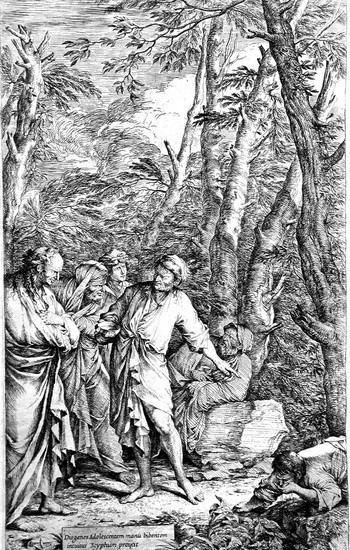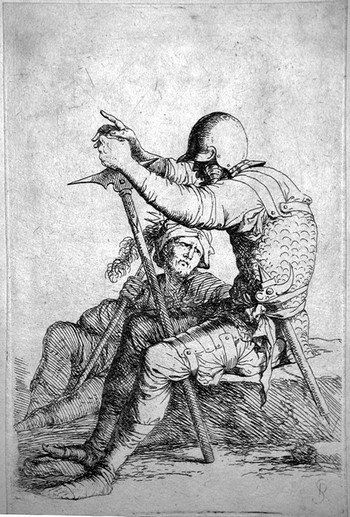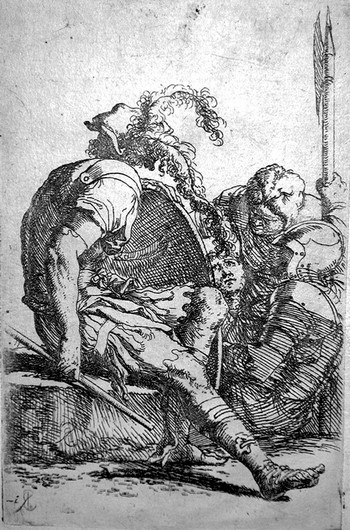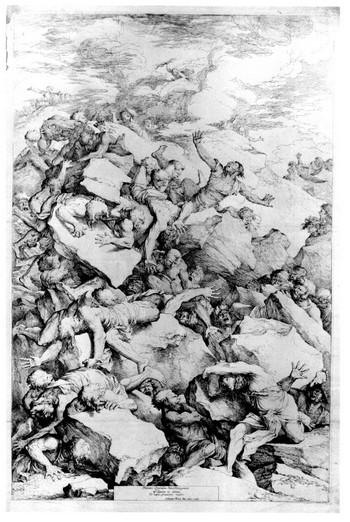
ROSA Salvator
(Naples 1615 – Rome 1673)
Neapolitan painter, engraver, satirical poet and theatrical actor , born in Arenella near Naples; Rosa was the son of a lawyer, Vito Antonio De Rosa, and Giulia Greco, who foresaw for him law studies or, alternatively, an ecclesiastical career. For this reason, at the early death of his father, his grandfather Vito Greco sent him to study, together with his brother Giuseppe, in a religious college.
However, Salvatore showed his interest in art very soon, so that he was started to learn the first rudiments of painting from a maternal uncle and then move on to work with his brother-in-law painter Francesco Fracanzano, then again with Aniello Falcone and finally with Jusepe de Ribera.
At the age of seventeen Salvatore lost both his parents, finding himself without financial support at a still early age. In 1634 he moved to Rome, perhaps on the advice of the painter Giovanni Lanfranco, where he joined the pictorial flow of Bamboccianti, which he later abandoned. Even in this very period, Rosa was among the first to insert primitive romantic elements in landscapes paintings. At the same time, Salvatore also dedicated himself to choreography, setting up scenes of carnival-like satirical performances, collaborating with Claude Lorrain and Pietro Testa and making the acquaintance of Bernini, with whom, however, he often was in disagreement.
In 1636 the artist returned to Naples where he continued to dedicate himself to the execution of landscapes with scenes representing real anticipations of pictorial romanticism, with subjects animated by soldiers, often dramatic, that earned him the nickname of “Salvatore of battles”.
Back to Rome in 1638, he was a guest of Cardinal Francesco Maria Brancaccio, bishop of Viterbo, who commissioned him to paint the Incredulity of Thomas, his first work of sacred art, for the altar of the Church of Santa Maria della Morte in Viterbo.
In 1639 he was called to Florence as a painter at the court of Mattia de’ Medici. Here he painted battles, landscapes and fantastic views. A multifaceted character, in addition to excelling in painting and engraving, he was an arrogant and boastful swordsman. This multiplicity of souls and talents of Rosa struck romantic fantasies and brought him great fortune and popularity. Between the 17th and 19th centuries he had a myriad of imitators both in painting and in engraving.
The European Romanticism built around Salvatore Rosa the myth of the dark and gloomy artist, alchemist, philosopher and brigand up to overturn his real historical physiognomy.
His paintings are scattered in the most prestigious museums in the world and his prints are still among the most appreciated and sought.
In his engraved work, about 110 copperplates, we can recognize different influences, principally by Jusepe de Ribera, but also by Pietro Testa, Giovanni Benedetto Castiglione and Pier Francesco Mola.
Very famous series are the sixty-two ‘Different Figures’, small in size, as well as the larger plates, The Genius of Salvator Rosa, Jason and the dragon, Diogenes throwing the bowl, and many others up to the huge table of the Fall of the Giants.
Sometimes his works have been engraved with the aim of obtaining pictorial commissions that often did not arrive just as in the case of the Fall of the Giants.
Salvatore Rosa died at the age of 57, and his remains were buried in Rome in the church of Santa Maria degli Angeli.
